Orbital floor fracture
General
An orbital floor fracture, also known as a "blow-out fracture", is a break in the bone in which the eyeball (Globe) lies.In the event of external force, this breaks at its weakest point, which is located on the ground. Typically, such a fracture results from a punch or the impact of a hard ball such as a golf or tennis ball.
More information can be found here: Structure of the orbit
Individual symptoms can vary, some of which are typical of a fracture of the orbital floor and therefore almost always occur. Especially a black eye due to a hematoma, as well as a fallen eyeball (Enophthalmos) and visual disturbances are typical symptoms of an orbital floor fracture. Surgical treatment of the fracture can improve the symptoms and complete healing of the damaged structures is sought. Depending on the individual symptoms and damaged structures, the course of the disease can vary. Rapid treatment of the fracture has a positive effect on the course of the disease.

Symptoms
The individual symptoms of an orbital floor fracture depend on the damaged structures, which inevitably arise when force is applied to the orbit. Typical is a fallen back eyeball, which in medicine is called Enophthalmus referred to as. Since more space has been created in the eye socket after a fracture of the orbital floor, the eye falls back a little, causing this symptom. Bleeding, which occurs as a result of the application of force, usually causes the so-called monocle hematoma, which has this name due to its typical shape and location. When nerves in the orbit area are damaged, it is usually accompanied by loss of vision. Restriction of movement of the eye is also typical due to the impairment of the muscles that are actually responsible for movement. If nerves that supply the sensitivity of the face are damaged, the affected area will lose sensation. The cheek in particular is often affected by these loss of sensitivity.
causes
The cause of the formation of an orbital floor fracture is a high force applied to the eyeball, resulting in a break in the bone in which the eyeball lies. The bone is known as the orbit and usually breaks at the weakest point and thus at the orbital floor. The reasons for the high force applied are particularly blows to the eye as well as accidents that involve high force applied to the eye.
The injury is also typical in sports accidents, when hard balls hit the eye exactly and there is massive violence on the eye and the orbit. One sport in which this injury occurs frequently is tennis, for example. A fracture of the orbital floor, which is often associated with other fractures of the facial bones, can also result from a severe collision of the person concerned with another person or an object. Contact sports in particular are frequent triggers for these complex facial fractures.
Read more about this:
- The most common sports injuries
- Cheekbone fracture
- Skull base fracture
Appointment with ?

I would be happy to advise you!
Who am I?
My name is dr. Nicolas Gumpert. I am a specialist in orthopedics and the founder of .
Various television programs and print media report regularly about my work. On HR television you can see me every 6 weeks live on "Hallo Hessen".
But now enough is indicated ;-)
In order to be able to treat successfully in orthopedics, a thorough examination, diagnosis and a medical history are required.
In our very economic world in particular, there is too little time to thoroughly grasp the complex diseases of orthopedics and thus initiate targeted treatment.
I don't want to join the ranks of "quick knife pullers".
The aim of any treatment is treatment without surgery.
Which therapy achieves the best results in the long term can only be determined after looking at all of the information (Examination, X-ray, ultrasound, MRI, etc.) be assessed.
You will find me:
- Lumedis - orthopedic surgeons
Kaiserstrasse 14
60311 Frankfurt am Main
You can make an appointment here.
Unfortunately, it is currently only possible to make an appointment with private health insurers. I hope for your understanding!
For more information about myself, see Lumedis - Orthopedists.
therapy
An orbital floor fracture is treated by surgery. The surgeon first has to gain access to the damaged bone. This involves making an incision under the eye. Then the two bone fragments are pushed together again and any structures that are trapped in the bone gap are freed from this. These measures alone can help to relieve structures such as nerves and muscles and thus improve symptoms. Since the bone immediately forms a gap again without fixation, the original stability must be restored through the targeted use of certain materials. The damaged bone is repaired using modern materials that promote bone formation and at the same time support the broken orbit. After the procedure, the skin under the eye is sutured, taking care to leave a minimal scar.
More information on this topic:
- Pain after surgery
- Post-operative pain therapy
- Wound healing
diagnosis
The diagnosis of an orbital floor fracture can usually be made simply by describing the situation that led to the symptoms, as well as an inspection and examination of the patient. In order to be able to assess the potential damage to the substances lying in the orbital cavity, diagnostic imaging is usually carried out.
X-rays can be made, which can usually show the orbital floor fracture well.
A computed tomograph creates images using X-ray technology, but these are many times more detailed than a normal X-ray image. The images of a computer tomograph show the structures in many layers, which is why this technique is used especially for complicated fractures with severe symptoms. If symptoms occur that lead to restricted eye mobility and loss of sensitivity, it should be discussed which nerve has failed so that this can be taken into account during the operation.
consequences
If there has been a blow to the eye or any other form of violence, if typical symptoms of an orbital floor fracture are present, a visit to a doctor is always recommended so that the diagnosis can be made and adequate therapy can be initiated. If there is no therapy, serious complications can occur, which could have been prevented by an operation.
A pinched muscle can be destroyed and thus permanently cause double vision. If nerves have been damaged and there is no therapy, loss of sensitivity, restricted movement of the eye and loss of vision can result.
Since the orbit is in direct connection with the paranasal sinus and the fracture usually creates a connection between the eye socket and the paranasal sinus, there is a risk of infection of the structures of the eye socket.
forecast
The individual prognosis of an orbital floor fracture depends on the damage caused by the force. In many cases, only the floor of the orbital is broken and the symptoms can be improved with surgery.
However, it can also lead to detachment of the retina, muscle and nerve damage, as well as heavy bleeding, which can significantly worsen the course of the disease and the prognosis. In order to achieve the best possible course of the disease, it is therefore recommended that a doctor should clarify this quickly and that therapy should be started quickly.
prophylaxis
Since an orbital floor fracture usually results from the application of force to the eye, avoiding the disease is difficult. It should be noted that the fracture is common in some sports, and safety measures may be taken when performing these sports.






.jpg)


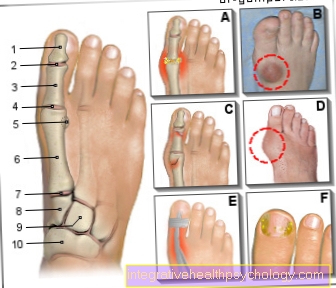
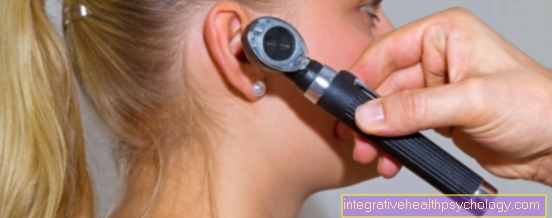








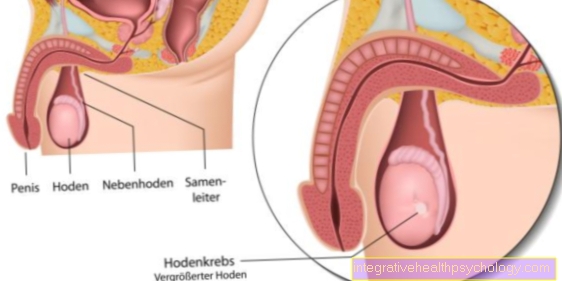


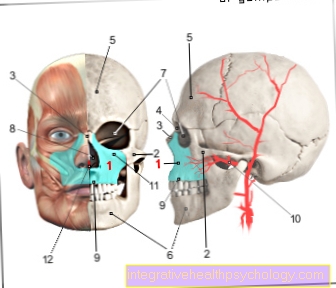
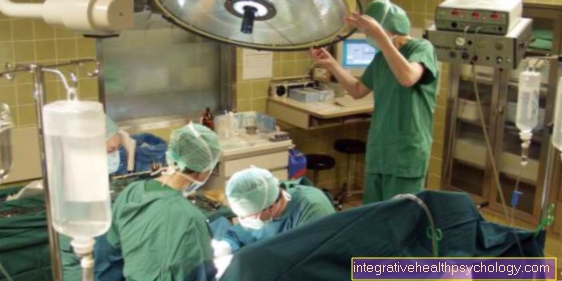


.jpg)


